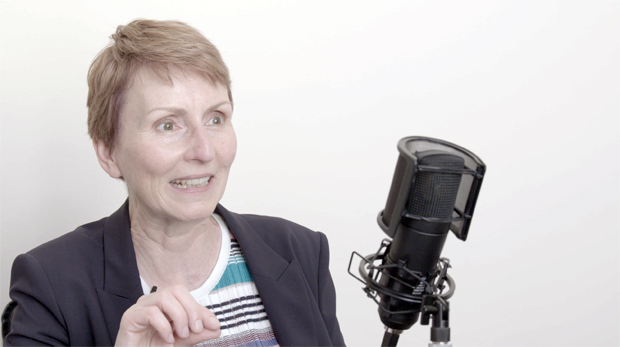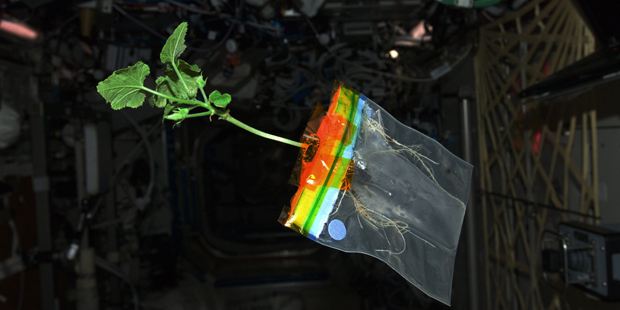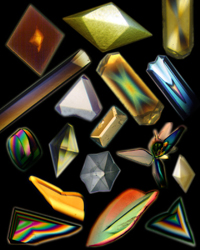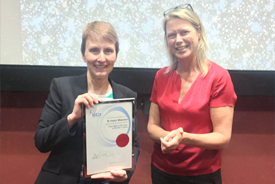Dr Helen Sharman told a rapt #SCIPEL audience how chemistry sent her into space, and how chemistry in space can change live on earth.
Simon Frost
Dr Helen Sharman always knew that she wanted to study science at university, and considered biology, medicine, and physics before deciding on chemistry.
‘After – well, in fact, during – my degree, I always knew I wanted to go into industry,’ Dr Sharman said, as she began her fully booked evening lecture at SCI’s London headquarters. ‘I just thought chemistry was going to be a fabulous way of keeping my options open.’
How right she was – Dr Helen Sharman’s CV reads like an especially far-fetched answer to the question, ‘What would you like to be when you grow up?’
Before taking the job for which she became best known, Helen Sharman worked for General Electric, developing screens and coatings for electronics; and then as a chemist for the confectioner Mars, where she was part of the team that developed the innovative Mars Ice Cream – a canny solution to the seasonal dip in chocolate bar sales over summer.
‘I then moved on in my job to the next department – the chocolate department,’ she continued, a smattering of oohs and aahs returning from the audience.
‘One of the tasks I had to do every day was to trundle down to the production line and take samples of chocolate and’ – she whispered – ‘taste it’.
‘There I was, using my chemistry, in industry, in a production environment, tasting chocolate. I loved it.
‘What better job could anybody have?’
There can’t be many. But one day, while driving home, Helen Sharman heard five words on a radio advert that could tempt her away even from her dream job at a chocolate factory.
‘Astronaut wanted: no experience necessary’.
No experience necessary
The advert was for Project Juno, the private British space programme to select the country’s first ever astronaut, who would join three Russian astronauts on the Mir Space Station for eight days.
‘They were looking for people who were qualified in something like science, engineering, medicine – something technical – and someone who did a practical job with their hands, because the ultimate astronaut was going to need to do experiments in space,’ Dr Sharman explained.
The astronaut would also need learn Russian in preparation for 18 months of training in Star City, near Moscow, before embarking on an eight-day mission orbiting Earth on the Mir Space Station with three Russian astronauts.
Finally, Dr Sharman explained, the successful applicant had to be reasonably physically fit, or more specifically, healthy – ‘You can train a certain fitness if you've got an internal health’, she said.
Of the 13,000 initial applicants, Helen Sharman made it to the final two. She and RAF Major Timothy Mace would not find out until three months before departure who was first choice and who was backup.
Dr Sharman recorded an exclusive interview for the SCI Podcast while she was here.
Meanwhile, the two prospective astronauts underwent rigorous training and tests, flight simulations, and experienced the illusion of weightlessness (achieved through parabolic flight in an aeroplane) – ‘This is the part of the training that every astronaut agrees, by far, is the best bit’, Dr Sharman said.
Experiments in space
Of course, it was Helen Sharman who was selected, and on 18 May 1991, she boarded the Soyuz TM-12 mission to the Mir Space Station with Soviet cosmonauts Anatoly Artsebarsky and Sergei Krikalyov, experiencing 3G of acceleration on launch and in 530 seconds – less than nine minutes – was 400km away from the earth’s surface. The Soyuz capsule orbited the planet for two days before manually docking with Mir.
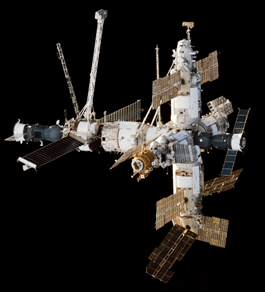
Credit: NASA
With no time to waste, she began work on the experiments she was there to do for the next eight days. Focusing on agricultural experiments examining how radiation, atmosphere and weightlessness affect the growth of plants, her cargo included growth media, potato roots, wheat seeds, and a lemon tree.
‘In every cell in every root tip, there is a small, very dense crystal, and it’s because that crystal sinks to the bottom of the cell, so the chemical signals to the plant where to grow the next root cell, so the plant roots grow down under the influence of gravity towards the centre of the earth,’ she explained.
‘Of course, being weightless, these little chemical crystals are floating around inside these cells in the root tips, and they're touching the cell walls and the plant really doesn't know which way to grow the next part of its root so these potato roots ended up growing in all directions out of the medium that they were supposed to be growing in!’
Chemists have been able to grow some plants in space, but have never been able to grow a fruiting plant. ‘We can take a potato plant to space with potato tubers on it and make them a bit bigger, but we can't take a plant and have it flower, pollinate it, and then create fruit,’ Dr Sharman explained.
But why? Dr Sharman suggested one popular theory, that the chemical constituents of the atmosphere in space – or in the space station itself, or even the box in which they are growing – do not allow for growth, perhaps because of a lack of convection currents causing higher concentrations of oxygen or carbon dioxide to surround the leaves. ‘We still haven't got the statistical body, the huge amount of data that we need in space, because we just haven't been there for long enough. We need to do a lot more of these experiments to really understand what's going on there,’ she said – and building this body of data will be key to any future attempts to create human settlements on other planets.
Space crystals
Dr Sharman also illustrated ways that conducting chemistry in space is already benefitting life here on earth. Using bovine insulin as an example, she showed how protein crystals grown in space were much bigger and better formed, and with fewer dislocations.
Membrane proteins are the targets for approximately 67% of all pharmaceuticals, and the improved understanding of protein structures gained from these more complete crystals is helping researchers to determine how specific proteins function and are involved in the disease process, informing the creation of more effective drugs to treat a huge range of conditions.
Protein crystals grown in space.
Credit: NASA
‘Imagine you have a solution of protein [on earth]. As you start to pull bits of those protein molecules out of that solution, very locally, it creates differences in density in that solution. Everybody is told when they study chemistry that gravity does not affect chemistry, but this is one case where it actually does.
‘Those small differences in density occur with convection currents. Even if you're not using temperature, you still have convection currents, and these molecules of protein, with very small bonds between them, go straight past each other and they tend to create pretty puny crystals with lots of dislocations,’ she explained.
‘Take your protein to space, and you're not going to get any density differences because regardless of how much you've got in your solution it weighs the same because it's all weightless, so you don't get these convection currents in the air.’

Chemistry kept us alive
To close her talk, Dr Sharman reflected on the view from the window inside the space station, where the stars went on forever, and the earth below felt both large and small – the entire earth being orbited every 92 minutes.
‘Each of those stars is there because of a whole series of events to mean that it formed in a particular place, which means that the light from that star was reaching a chemist in space at that particular time. And actually, when I look back, what were the chances of that? What were the chances of me being in space? It wasn't just because I was a chemist – it is actually the whole discipline of chemistry that enables people to survive in these isolated environments from earth.
Dr Sharman receives her lecture certificate from SCI's Executive Director, Sharon Todd.
‘Chemistry kept us alive and relatively comfortable, but it's actually chemistry that we're doing in space that continues to increase and improve the standard of living on earth, but it's also the whole discipline of chemistry, which is a key part of the continued studies in astronomy and other space science. And that enables to investigate mysteries of the universe, not only for our own curiosity but for generations to come.’
Dr Sharman took time after her lecture to talk to audience members in a drinks reception.


